
French postcard in the Les Grandes Gueules Series by Dervish International Publications, Paris, no. 102. Illustration: Jean Mulatier.

Romanian postcard by Casa Filmului Acin.
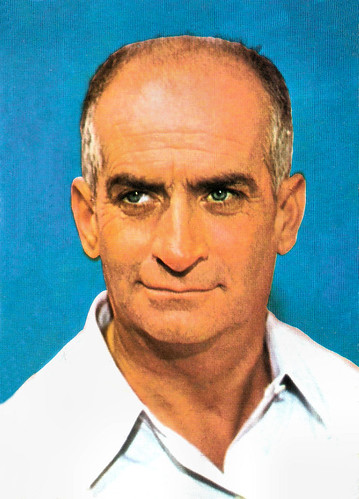
Romanian postcard by Casa Filmului Acin.
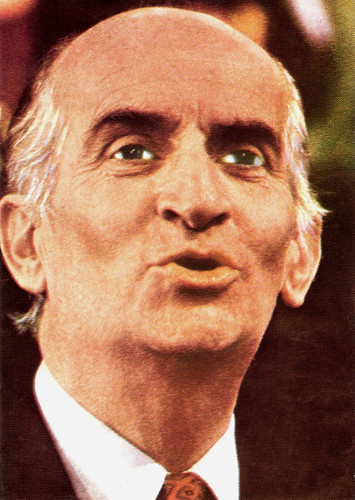
Romanian postcard by Casa Filmului Acin, no. 33102.

French postcard in the 'Les acteurs français vus par Solo' series by Carterie Occitane, Toulouse, no. 9. Illustration: Solo.
A penchant for tomfoolery
Louis de Funès (French pronunciation: [lwi də fynɛs]) was born Louis Germain David de Funès de Galarza in Courbevoie, France in 1914. His father, Carlos Luis de Funès de Galarza had been a lawyer in Seville, Spain, but became a diamond cutter upon arriving in France. His mother, Leonor Soto Reguera was of Spanish and Portuguese extraction.
Since the couple's families opposed their marriage, they settled in France in 1904. Known to friends and intimates as ‘Fufu’, the young De Funès was fond of drawing and piano playing and spoke French, Spanish, and English well. He studied at the prestigious Lycée Condorcet in Paris.
Louis showed a penchant for tomfoolery, something which caused him trouble at school and later made it hard for him to hold down a job. He became a pianist, working mostly as a jazz pianist at Pigalle, the famous red-light district. There he made his customers laugh each time he made a grimace.
He studied acting for one year at the Simon acting school. It proved to be a waste of time except for his meeting with actor Daniel Gélin, who would become a close friend. In 1936, he married Germaine Louise Elodie Carroyer with whom he had a son, Daniel (1937). In 1942, they divorced. During the occupation of Paris in the Second World War, he continued his piano studies at a music school, where he fell in love with a secretary, Jeanne Barthelémy de Maupassant, a grandniece of the famous author Guy de Maupassant. They married in 1943 and remained together for forty years until De Funès died in 1983.
The pair had two sons: Patrick (1944) and Olivier (1947). Patrick became a doctor who now practices in Saint-Germain en Laye. Olivier was an actor for a while, known for the son roles in his father's films, including Fantômas se déchaine/Fantomas Strikes Back (André Hunebelle, 1965) starring Jean Marais, Le Grand Restaurant/The Big Restaurant (Jacques Besnard, 1966), Les Grandes Vacances/The Big Vacation (Jean Girault, 1967), and Hibernatus (Edouard Molinaro, 1969) with Claude Gensac as De Funès’ wife, a role she played in many of his films. Olivier later worked as an aviator for Air France Europe.

Romanian postcard by Casa Filmului Acin. Retail price: 1,50 Lei.

East-German postcard by VEB Progress Film-Vertrieb, Berlin, no. 128/69, 1969. Photo: Unifrance-Film.

East-German postcard by Progress Filmverleih, Berlin, no. 47/78, 1978. Retail price:0,20 M.
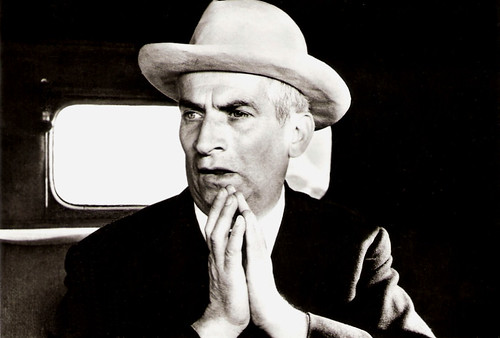
Romanian postcard by Casa Filmului Acin, no. 181. Retail price: 1,50 Lei.

Romanian postcard by Casa Filmului Acin, no. 309. Retail price: 1,50 Lei.
A short, balding, skinny actor
Through the early 1940s, Louis de Funès continued playing piano at clubs, thinking there wasn't much call for a short, balding, skinny actor. His wife and Daniel Gélin encouraged him to overcome his fear of rejection. De Funès began his show business career in the theatre, where he enjoyed moderate success. At the age of 31, thanks to his contact with Daniel Gélin, he made his film debut with an uncredited bit part as a porter in La Tentation de Barbizon/The Temptation of Barbizon (Jean Stelli, 1945) starring Simone Renant.
For the next ten years, de Funès would appear in fifty films, but always in minor roles, usually as an extra, scarcely noticed by the audience. Sometimes he had a supporting part such as in the Fernandel comedy Boniface somnambule/The Sleepwalker (Maurice Labro, 1951) and the comedy-drama La vie d'un honnête homme/The Virtuous Scoundrel (Sacha Guitry, 1953) starring Michel Simon.
In the meanwhile, he pursued a theatrical career. Even after he attained the status of a film star, he continued to play theatre. His stage career culminated in a magnificent performance in the play 'Oscar', a role which he would later reprise in the film version of 1967. During this period, De Funès developed a pattern of daily activities: in the morning he did dubbing for recognised artists such as Renato Rascel and the Italian comic Totò, during the afternoon he worked in film, and in the theatre in the evening.
A break came when he appeared as the black-market pork butcher Jambier (another small role) in the well-known WWII comedy, La Traversée de Paris/Four Bags Full (Claude Autant-Lara, 1956) starring Jean Gabin and Bourvil. In his next film, the mediocre comedy Comme un cheveu sur la soupe/Crazy in the Noodle (Maurice Régamey, 1957), De Funès finally played the leading role.
More interesting was Ni vu, ni connu/Neither Seen Nor Recognised (Yves Robert, 1958). He achieved stardom with the comedy Pouic-Pouic (Jean Girault, 1963) opposite Mireille Darc. This successful film guaranteed De Funès top billing in all of his subsequent films.
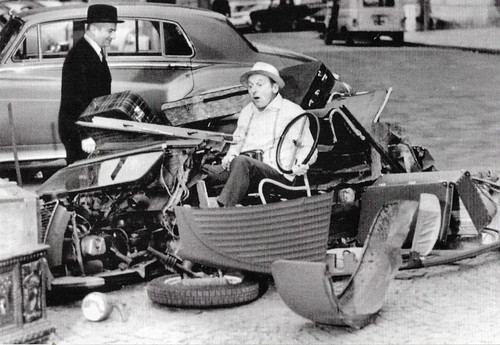
French postcard by Finart-Print (DR), no. 303. Louis de Funès and Bourvil in Le corniaud/The Sucker (Gérard Oury, 1965).
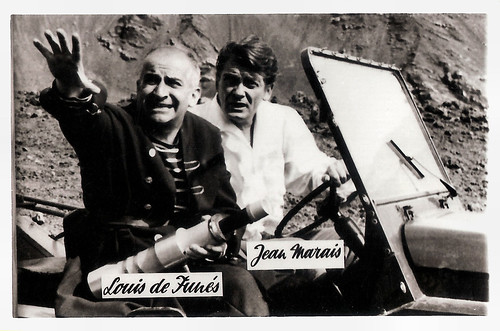
Small Romanian collectors card. Photo: Louis de Funès and Jean Marais in Fantômas se déchaîne/Fantomas Unleashed (André Hunebelle, 1965).

French postcard by Finart-Print (DR), no. 315. Louis de Funès and Bourvil in La grande vadrouille/Don't Look Now... We're Being Shot At! (Gérard Oury, 1966).

French postcard by La Roue Tourne, Paris / Editions du Globe, Paris, no. 1096. Louis de Funès and Bourvil in La Grande Vadrouille/Don't Look Now - We're Being Shot At (Gérard Oury, 1966).

Small Romanian collectors card. Photo: publicity still for Fantômas contre Scotland Yard/Fantomas Against Scotland Yard (1967) with Mylène Demongeot (at right below), Louis de Funès, Jean Marais, Francoise Christophe, Jacques Dynam, and Henri Serre.
France's own answer to the James Bond frenzy
Between 1964 and 1979, Louis de Funès topped France's box office of the year's most successful films seven times. At the age of 49, De Funès unexpectedly became a superstar with the international success of two films. Fantômas (André Hunebelle, 1965) was France's own answer to the James Bond frenzy and led to a trilogy co-starring Jean Marais and Mylène Demongeot.
The second success was the crime comedy Le gendarme de Saint-Tropez/The Gendarme of St. Tropez (Jean Girault, 1964) with Michel Galabru. After their first successful collaboration on Pouic-Pouic, director Girault had perceived De Funès as the ideal actor to play the part of the accident-prone gendarme. The film led to a series of six 'Gendarme' films.
De Funès's collaboration with director Gérard Oury produced a memorable tandem of de Funès with Bourvil, another great comic actor, in Le Corniaud/The Sucker (Gérard Oury, 1964). The successful partnership was repeated two years later in La Grande Vadrouille/Don't Look Now - We're Being Shot At (Gérard Oury, 1966), one of the most successful and the largest-grossing film ever made in France, drawing an audience of 17,27 million. It remains his greatest success.
Oury envisaged a further reunion of the two comics in his historical comedy La Folie des grandeurs/Delusions of Grandeur (Gérard Oury, 1970), but Bourvil's death in 1970 led to the unlikely pairing of de Funès with Yves Montand in this film.
Very successful, even in the USA, was Les aventures de Rabbi Jacob/The Mad Adventures of Rabbi Jacob (Gérard Oury, 1973) with Suzy Delair. De Funès played a bigoted Frenchman who finds himself forced to impersonate a popular rabbi while on the run from a group of assassins. In 1975, Oury had scheduled to make Le Crocodile/The Crocodile with De Funès as a South American dictator, but in March 1975, the actor was hospitalised for heart problems and was forced to take a rest from acting. The Crocodile project was cancelled.

Romanian postcard by Casa Filmului Acin, no. 294. Retail price: 1,50 Lei. Photo: Louis de Funès and Geneviève Grad in Le gendarme se marie/The Gendarme Gets Married (Jean Girault, 1968).

Romanian postcard by Casa Filmului Acin, no. 541. Retail price: 1,50 Lei. Photo: Louis de Funès and Geneviève Grad in Le gendarme se marie/The Gendarme Gets Married (Jean Girault, 1968).

Romanian postcard by Casa Filmului Acin, no. 544. Retail price: 1,50 Lei.

French postcard by La Roue Tourne, Paris.

East-German postcard by VEB Progress Film-Verlag. Photo: Louis de Funès and Andréa Parisy in Le Petit Baigneur/The Little Bather (1968).
A very shy person in real life
After his recovery, Louis de Funès collaborated with Claude Zidi, in a departure from his usual image. Zidi wrote for him L'aile ou la cuisse/The Wing and the Thigh (Claude Zidi, 1976), opposite Coluche as his son. He played a well-known gourmet and publisher of a famous restaurant guide, who is waging a war against a fast-food entrepreneur. It was a new character full of nuances and frankness and arguably the best of his roles.
In 1980, De Funès realised a long-standing dream to make a film version of Molière's play, L'Avare/The Miser (Louis de Funès, Jean Girault, 1980). In 1982, De Funès made his final film, Le Gendarme et les gendarmettes/Never Play Clever Again (Tony Aboyantz, Jean Girault, 1982).
Unlike the characters he played, de Funès was said to be a very shy person in real life. He became a knight of France's Légion d'honneur in 1973. He resided in the Château de Clermont, a 17th-century monument, located in the commune of Le Cellier, which is situated near Nantes in France.
In his later years, he suffered from a heart condition after having suffered a heart attack caused by straining himself too much with his stage antics. Louis de Funès died of a massive stroke in 1983, a few months after making Le Gendarme et les gendarmettes. He was laid to rest in the Cimetière du Cellier, the cemetery situated on the grounds of the château.
French Films: “Although fame was a long time coming, Louis de Funès is regarded today as not just a great comic actor with an unfaltering ability to make his audience laugh, but practically an institution in his own right. His many films bear testimony to the extent of his comic genius and demonstrate the tragedy that he never earned the international recognition that he certainly deserved.”
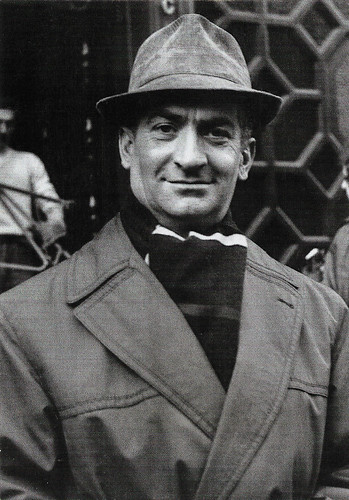
French postcard in the series Portraits de Stars by L'aventure carto, no. 8, 2003. Photo: Marcel Thomas / Collection Gérard Gagnepain.

French postcard by Les Editions GIL in the série acteurs, no. 7. Louis de Funès in L'aile ou la cuisse/The Wing and the Thigh (Claude Zidi, 1976).

French postcard in the série acteurs by Editions Gil, no. 8. Coluche and Louis de Funès in L'aile ou la cuisse/The Wing and the Thigh (Claude Zidi, 1976).

French postcard by Les editions GIL in the série acteurs, no. 11. Photo: Louis de Funès in L'avare/The Miser (Louis de Funès, Jean Girault, 1980).

French postcard in the 'Les geants du cinema' series, by Editions et Impressions Combier, Mâcon (Cim), no. 2. Illustration: Jean-Pierre Gillot.
Sources: Gian Luca Farinelli (Il Cinema Ritrovato 2021), Steve Shelokhonov (IMDb), French Films, Wikipedia, and IMDb.
This post was last updated on 23 April 2024.
No comments:
Post a Comment